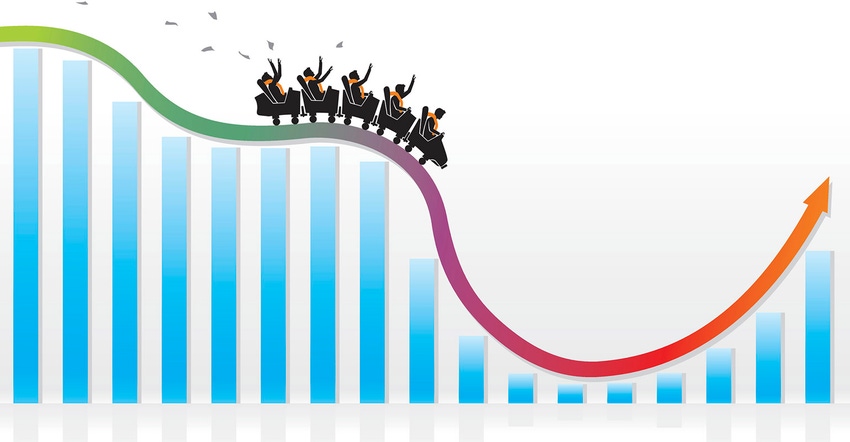
This is probably the last thing you want to read right now with prices hot, crops emerging, and looming hopes for a big, profitable fall harvest, if weather cooperates.
Yeah, I get it. Talk about a wet blanket!
Still. If there’s anything I’ve learned talking with farmers and writing about ag cycles over the years, it’s this: what goes up must come down; balloons fill, then deflate. And since farming is one of the most supply-demand driven industries in the world, there is one thing certain about the current hot bull market: At some point, the boom will go bust. No matter how many people begin pontificating about ‘new plateaus,’ ‘super mini-cycles,’ or ‘golden age.’
Insert eye roll emoji here.
This is quite predictable as anyone who has farmed through at least one of these cycles knows. And since the average age of our readers is around 60, well – you’ve been there. You know.
“We’re going to make as much money as we can the next two years because at some point we could be back at $3.25 corn, and no one likes that,” says Illinois farmer Matt Swanson, who happens to be on the younger side of our demographic. “You need to be taking this boom money, paying stuff down, and buying what you can for the right price, because it’s not going to stay this way forever.”
By now you’re saying: “Wilson, stop raining on our parade. Can’t you just let us enjoy the good times for a while?”
Of course. Focus on making great sales with big margins and avoiding taxes however legally possible. Goodness knows row crop farmers need a break after so many years of so-so profits.
But here’s the thing. It’s during the good times when you are best able to plan ahead for how to manage the ‘trough,’ as some economists call the price collapse after global supply numbers balloon up.
A few years ago contributing market analyst Bryce Knorr and I wrote a story, Farm like Pharaoh: How to design a business plan for a boom-and-bust industry. During boom times, farmers don’t always “see” where they are in the current economic cycle. As a result, they don’t always sock away enough profit from those good times to buffer the hangover years that follow (See Swanson’s sage advice above).

So if, by this winter, you feel like you’re swimming in cash -- keep swimming. Do you really need that new pickup? Are you buying that new tractor just to reduce your tax burden? You may need that extra cash in four years when the neighbor’s farm comes up for sale. Evaluate your working capital and discuss with your accountant or banker if it makes sense.
How long?
We all want to know how long this boom will last. No one saw it coming eight months ago and no one will know when it ends, either. But you can get clues by watching global production reports. Starting now, pay more attention to global supply-and-demand conditions, not just what’s happening in your backyard.
From 2011 to 2013, U.S. farmers experienced profits well above long-term averages, thanks to tight supplies and strong demand. But few industries get slapped as hard by the invisible hand of the market as agriculture. High prices incentivize people to plant things where they might not have a year earlier. In ag’s last boom world farmers added well over 120 million acres of corn, soybeans, and wheat, fueling a 9% increase in world row crop acres from 2008 to 2014.
World corn yields increased 1.3% per year from 1990 to 2016. Since 1990, 56% of the increase in world corn production has been achieved through higher yields, and the remaining 44% has come from increased corn acres.
So predictable.
Enjoy this hot streak. Strike while the iron is hot. But be planning ahead. Those who do will be rewarded.
About the Author(s)
You May Also Like






